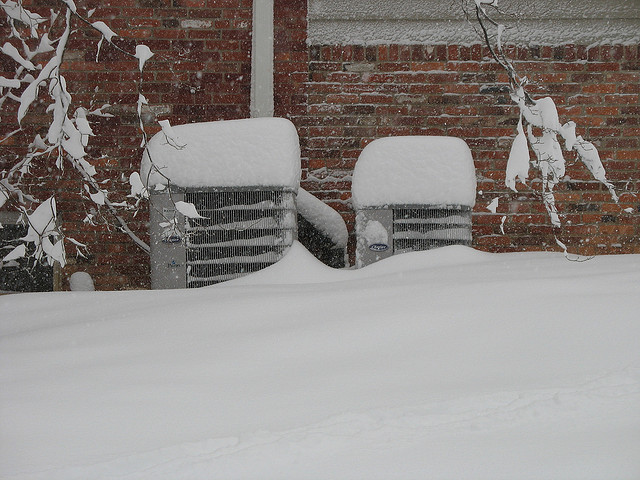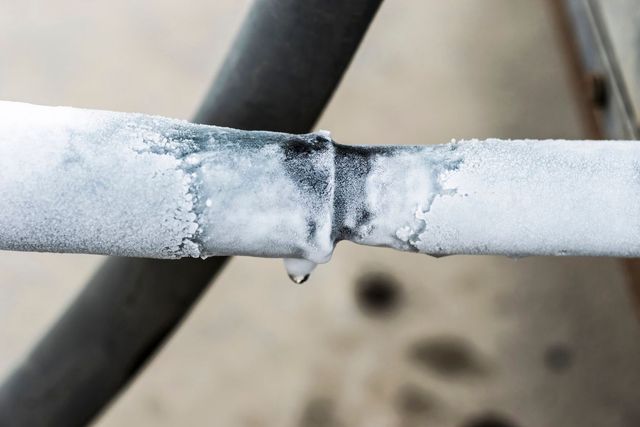Everybody may have his or her own way of thinking with regards to Have a Frozen AC Line? Here’s How to Fix It.

Introduction
Uncovering that your air conditioner pipeline is frozen can be concerning, specifically throughout hot summertime when you count on your air conditioner one of the most. Understanding what to do in such a situation is essential to prevent more damages to your air conditioning system and ensure your comfort inside.
Recognizing the Causes
Numerous elements can add to the freezing of an air conditioning pipe. Comprehending these causes can help you deal with the issue effectively.
Absence of Airflow
One usual source of a frozen air conditioning pipe is inadequate airflow. When the airflow over the evaporator coil is limited, it can cause the coil to drop below freezing temperature, resulting in ice formation on the pipe.
Low Refrigerant Levels
Insufficient refrigerant levels in your AC system can also lead to a frozen pipeline. Low cooling agent degrees can create the pressure in the system to drop, bring about the cold of dampness on the evaporator coil.
Cold Weather Conditions
In chillier climates, freezing temperature levels outside can contribute to the cold of a/c pipelines. If your a/c system is not effectively shielded or if there are leaks in the ductwork, cool air can infiltrate the system, triggering the pipe to freeze.
Dirty Air Filters
Dirty or stopped up air filters can limit airflow in your air conditioner system, bring about numerous concerns, including a frozen pipeline. It's essential to replace or cleanse your air filterings system frequently to ensure correct airflow and protect against ice buildup.
Indicators of a Frozen Air Conditioning Pipe
Identifying the indications of a frozen a/c pipe is vital for timely activity.
Decreased Airflow
If you discover a considerable decline in airflow from your vents, it might suggest a frozen pipeline.
Ice Buildup on the Pipe
Visible ice buildup on the cooling agent line or the evaporator coil is a clear indicator of an icy air conditioner pipe.
Unusual Sounds from the Unit
Uncommon sounds, such as hissing or gurgling, originating from your a/c device can signify that there's ice existing on the pipeline.
Immediate Actions to Take
When faced with an icy air conditioner pipeline, it's important to act promptly to prevent further damages to your air conditioning system.
Switching off the air conditioner
The first step is to switch off your a/c to avoid the system from running and aggravating the concern.
Looking for Blockages
Check the area around the interior system for any blockages that might be blocking air flow, such as furnishings or drapes.
Thawing the Pipe
You can make use of mild approaches like positioning towels soaked in warm water around the icy pipe to assist thaw it slowly.
Safety nets
Taking preventive measures can help prevent future occurrences of an icy AC pipeline.
Routine Maintenance Checks
Schedule normal maintenance checks with an expert HVAC technician to ensure that your air conditioning system is running successfully.
Changing Air Filters
On a regular basis change or clean your air filters to prevent air movement limitations and keep optimal efficiency.
Shielding Exposed Pipes
If your a/c pipelines are exposed to chilly temperature levels, consider shielding them to avoid cold throughout cold weather.
Seeking Professional Help
If DIY techniques stop working to fix the concern or if you're unsure about just how to proceed, it's best to look for assistance from a qualified HVAC professional.
When DIY Methods Fail
If your efforts to thaw the pipeline or address other problems are not successful, it's time to contact an expert.
Importance of Hiring a Professional HVAC Technician
A certified HVAC service technician has the expertise and tools required to detect and fix issues with your a/c system securely and successfully.
Verdict
Handling a frozen air conditioning pipe can be a discouraging experience, however recognizing just how to respond can assist decrease damages and recover convenience to your home. By recognizing the causes, acknowledging the indications, and taking timely activity, you can properly resolve the concern and prevent future occurrences.
What to Do If Your AC Line Is Frozen
Make Sure All Supply and Return Air Vents Are Open
If you notice problems with airflow, the first thing you should do is check your supply and return vents. Supply vents distribute clean, conditioned air throughout your home. As this air becomes stale, it’s pulled into the return vent, where it’s reconditioned before being sent back out through the supply vent.
When these vents are closed, air won’t flow in the home. Before examining your AC, check the vents in every room and ensure they’re all open.
Check for a Dirty Air Filter
Another possible cause of limited airflow is a dirty air filter. Your air conditioner’s filters catch elements you don’t want to breathe in, such as dirt and dust. Over time, filters can become clogged, ultimately blocking air from flowing in and out. The lack of airflow can then cause the entire coil to freeze and will completely restrict any air from moving through it. The AC may need to be powered off for one to two days to allow the coil to thaw after replacing the filter to allow proper functioning of the unit. This debris can also accumulate on your AC’s evaporator coil, requiring a more serious repair. In general, air filters should be cleaned regularly (about every two weeks).
Assess Your Outdoor Unit
In addition to checking your AC, assessing the outdoor unit is a good idea. Also known as the condensing unit, it works with your interior unit to release heat outside. An issue with the outdoor unit can result in rising internal temperatures.
Overgrown Shrubs or Clogged Leaves
From leaves and twigs to shrubs and debris, there’s no shortage of outdoor elements that can accumulate around your condensing unit. When these elements get lodged inside the unit, they can block airflow. Fortunately, removing the blockage can solve the problem.
Sounds of a Broken Fan
Shrubs and leaves aren’t the only things that can impede your outdoor unit’s airflow. If the fan is broken, the unit won’t be able to properly get rid of heat — which means the internal temperature won’t go down. First, make sure the fan is spinning. If it is, check for the following sounds of a broken fan:
- Buzzing
- Rattling
- Screeching
- Hissing
- Clicking
Preventative Measures
Nobody wants to deal with a frozen AC line. In addition to causing problems with your air conditioner, they require professional repairs. On the bright side, there are preventative measures you can take to help ensure this issue doesn’t arise in the first place.
https://www.coopergreenteam.com/blog/what-to-do-if-ac-line-frozen

Hopefully you liked our topic on Why Is Ice On My Outside Air Conditione. Many thanks for taking the time to read through our content. Enjoyed reading our piece of writing? Please share it. Help others check it out. We value reading our article about Have a Frozen AC Line? Here’s How to Fix It.
Schedule A Free Estimate
Comments on “Icy Air Conditioner Pipe - Causes and Ways to Resolve the Problem”